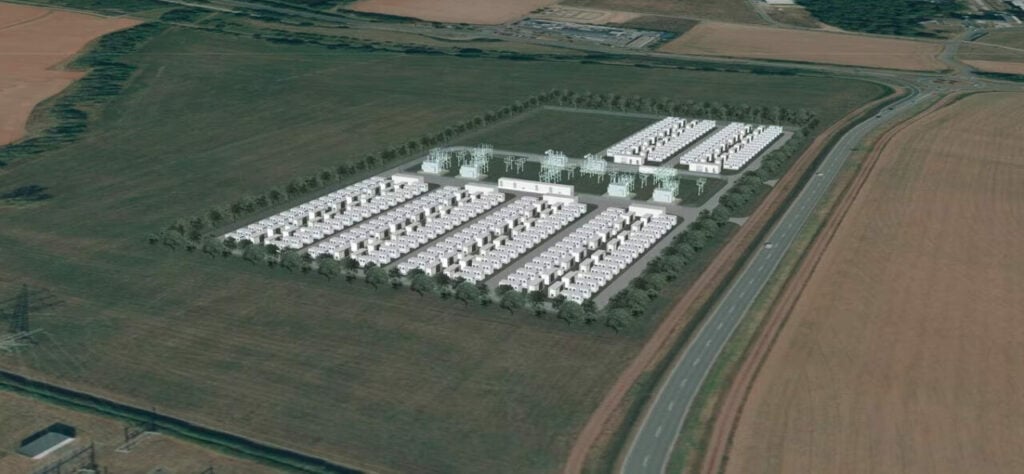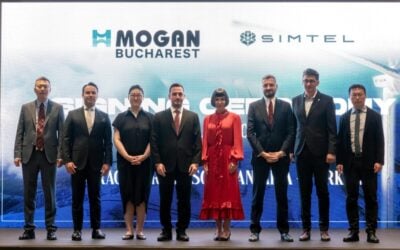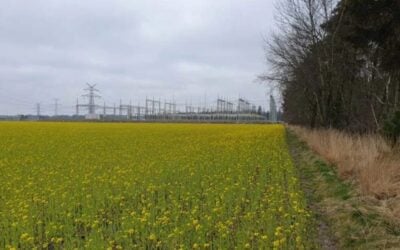
In Europe, Germany and Spain are among the energy storage markets that clients are most keen to learn more about, according to Wood Mackenzie analyst Anna Darmani.
Darmani, lead analyst focused on the downstream energy storage market for the research group’s EMEA practice, spoke with Energy-Storage.news at last week’s Energy Storage Summit EU, hosted in London, UK.
Enjoy 12 months of exclusive analysis
- Regular insight and analysis of the industry’s biggest developments
- In-depth interviews with the industry’s leading figures
- Annual digital subscription to the PV Tech Power journal
- Discounts on Solar Media’s portfolio of events, in-person and virtual
While the UK is a standout leader of the continent in terms of deployment figures, and arguably also sophistication of business models – as pointed out in a new study by Aurora Energy Research – tracking the European market is also becoming much more interesting, Darmani said.
“There was maybe not as much to speak about a couple of years ago on the European energy storage market, but then it’s definitely changing,” the analyst said, referring to media interest in the US as well as the UK.
“I think the scale is really taking off in Europe, and that’s a good thing.”
Previously, there had really only been one major talking point across continental Europe: the early opportunities for batteries to provide ancillary services and how quickly those would saturate. In light of falling costs making battery storage more viable and new market opportunities opening up, those conversations are now changing.
Conversely, while the UK is the biggest European market so far, with around 4GW of installed battery energy storage system (BESS) capacity, the sector’s maturation means that the opportunities and business case for storage on the GB grid (including England, Scotland, and Wales, but excluding Northern Ireland, which shares its grid with the Republic of Ireland), are well understood.
So, there are obviously a lot of discussions around the UK, but beyond that, Wood Mackenzie (WoodMac) clients want to know which other markets present opportunities within Europe.
“In Europe, outside the UK, we were always interested in Germany and Spain. Germany, we already see that the market is taking off, based on our analysis and what we hear from clients,” Darmani said.
A similarity between Europe’s most established market, the UK, as Energy-Storage.news readers will likely know, and Germany is that in both markets developers are getting comfortable with merchant opportunities, with stacking revenues from the different available streams to create a business case.
Several large-scale projects are being developed in Germany, and many players are expanding their business in the region. While in several European markets, all eyes are on upcoming storage tenders and auctions, in Germany, players are going in betting on merchant revenue and future power price volatility driven by a high share of renewables.
Curtailment of renewables among major drivers across Europe
Ancillary services markets are still open in Germany, with storage able to participate in primary Frequency Control Reserve (FCR) markets, where that isn’t yet the case in Spain. Germany’s electricity network experiences “good volatility” that BESS assets can help correct, and growing shares of renewable energy will contribute to that need. Besides, the German government is currently considering introducing a capacity market, which, when it happens, will provide additional revenue as well.
At the same time, curtailment is seeing literal terawatt-hours of renewable energy being generated and then wasted at negative prices and enormous costs to the German public, which again, provides a fundamental driver for energy storage, Darmani said.
Spain, meanwhile, has plenty of room to grow, with both its grid-scale and residential markets fairly small. The drivers are different but still fundamental to the smooth and stable operation of the grid.
“Spain is not benefiting from interconnections to a neighbouring country like Germany [is],” due to its location on the Iberian Peninsula, with only France offering meaningful import and export volumes of power across the border.
“They have a huge share of solar power installed there [in Spain]. We saw on some days last year that the solar capture price hit 65%, which is significant. At the same time, they have a [national] energy storage target of 22GW by 2030,” Darmani said.
However, so far there isn’t investment happening in Spain because the market signals, designed for a pre-battery storage era, are not there. In Spain, it is still more the case that clients want to know where the contracted revenues will come from, when tenders will take place and what the criteria are for eligibility, or perhaps when newer opportunities will emerge, such as the capacity market the Spanish government is currently considering introducing.
A few weeks ago, Spain’s government held a tender for energy storage under the national PERTE scheme for economic recovery and resilience. A total of 880MW/1,809MWh was awarded to companies, including Iberdrola and Naturgy, with the majority of awards in Spain’s central provinces.
Participants were looking at and waiting for that tender for a “very long time,” the analyst said, and that also tells you that bidders realised they would have no near-term opportunities to deploy energy storage in the country without it.
“The prices of the bids were very, very different from one another in the market, so that tells you also that there was a different risk appetite of the developers that were going into that market,” Darmani said.
Another takeaway is that most of the projects were co-located with solar PV, and the WoodMac analyst believes that will be a significant market segment for Spain in the years to come.
Attendees at last week’s summit, which was hosted by our publisher Solar Media, heard about the appeal and opportunities for energy storage in other rising European markets.
Country-specific sessions were held on Poland, Italy and Germany, and in a panel discussion on EU Electricity Market Design reform, Doriana Forleo, executive director of the Energy Storage Coalition, highlighted that pan-European opportunities will become a necessity due to Europe’s need to integrate renewables onto its grids en masse in the next few years.
This article was amended post-publication to clear up some errors made in transcribing Anna Darmani’s comments.






